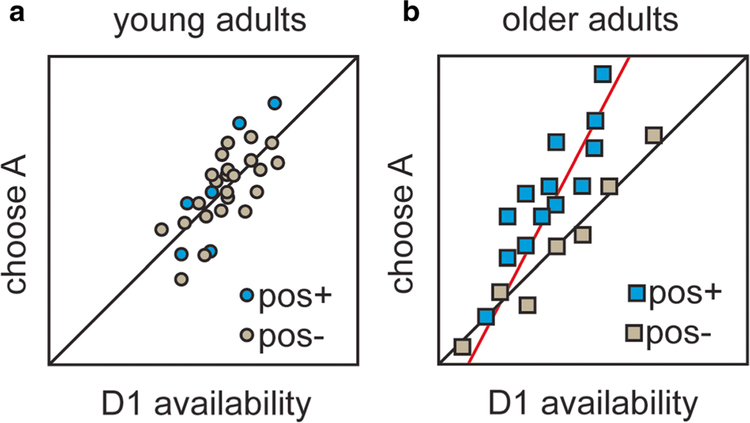Fig. 5.
Individual differences in choice selection to approach reward may be modulated by both dopamine and affective attentional biases. Data displayed in panels a–b are hypothetical and are presented to illustrate predictions. Older adults are more likely to show biased attention towards positive rather than negatively valenced stimuli. Here, representational positivity effect is binarized to visualize its possible influence on performance for high positivity subjects (pos+ represented in blue) and positivity absent subject (pos− in beige). a For young adults whose representational positivity effect is minimal, the influence of D1 availability on performance will be primary. b For older adults high in positivity, representational biases may interact with dopamine to influence choice behavior. Subjects with systematic changes in representation may show increased proclivity to approach reward (choose A) despite lower D1 availability, leading to a steeper regression line (red). (Color figure online)

